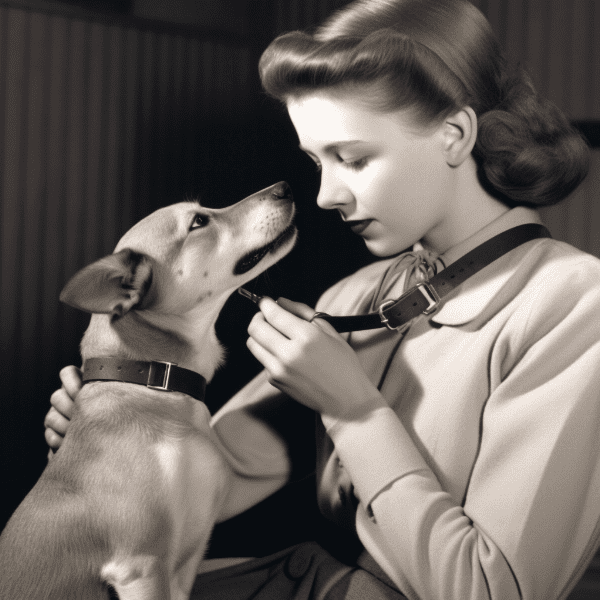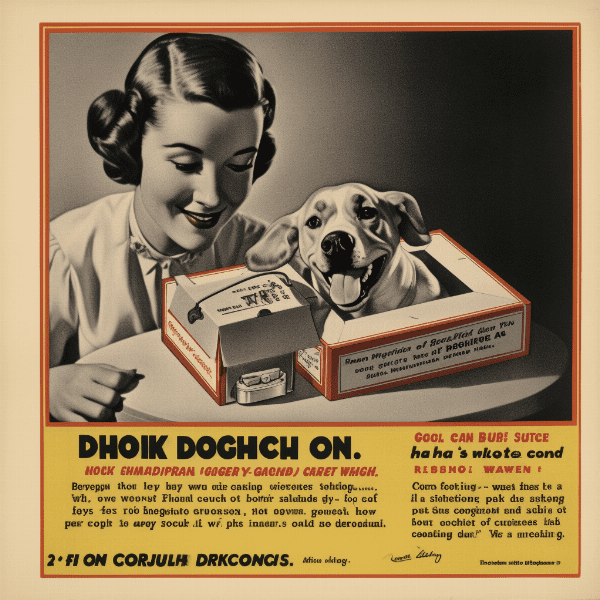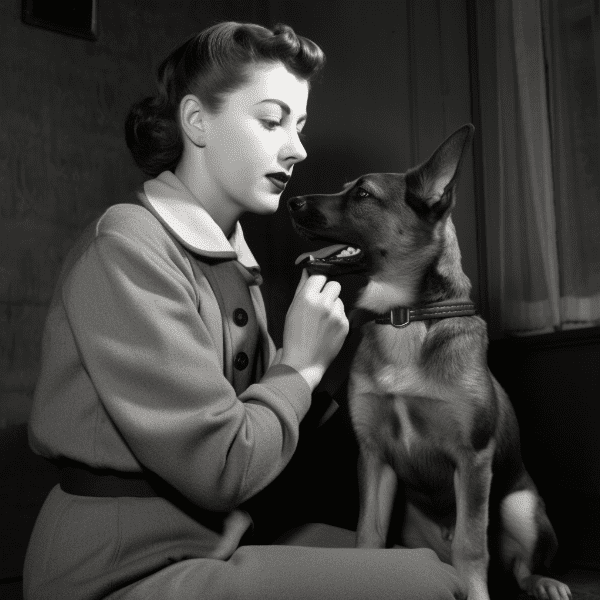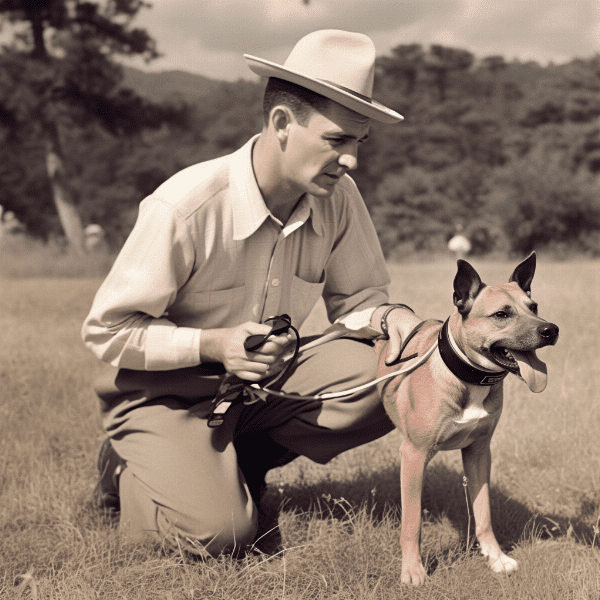Table of Contents
- Understanding Shock Collars for Barking Dogs
- How Shock Collars Help Control Barking
- Types of Shock Collars for Barking Dogs
- Choosing the Right Shock Collar for Your Dog
- Properly Fitting and Using Shock Collars
- Potential Risks and Precautions with Shock Collars
- Alternatives to Shock Collars for Barking Dogs
- Training Techniques to Reduce Barking
- Tips for Successful Use of Shock Collars
Understanding Shock Collars for Barking Dogs
Barking is a natural behavior for dogs, but excessive barking can be a nuisance and disturb the peace in your neighborhood. If you’ve tried different training methods to no avail, you may be considering a shock collar as an option to control your dog’s barking.
How Do Shock Collars Work?
Shock collars are electronic devices that deliver an electric current to your dog’s neck when they bark. The intensity of the shock can vary, but most shock collars have multiple levels that can be adjusted based on your dog’s size and temperament. The idea behind shock collars is that the shock will startle the dog and interrupt their barking, conditioning them to associate barking with an unpleasant sensation.
Are Shock Collars Safe for Dogs?
The safety of shock collars has been a subject of debate among dog owners and trainers. While shock collars can be effective in controlling barking, they can also cause physical and psychological harm to your dog if not used properly. It’s important to follow the manufacturer’s instructions for fitting and using the collar, and to never use it as a form of punishment.
What Are the Benefits of Using Shock Collars for Barking Dogs?
Shock collars can be a useful tool for controlling excessive barking, especially if other training methods have failed. They’re also a good option for people who live in areas with noise restrictions, as they can help you avoid complaints from neighbors. However, it’s important to use shock collars responsibly and in conjunction with positive reinforcement training methods.

How Shock Collars Help Control Barking
If you’re considering a shock collar as a tool to control your dog’s barking, it’s important to understand how they work and how they can help. Here are some ways that shock collars can be effective in controlling barking:
Interrupting Barking Behavior
One of the primary ways that shock collars can help control barking is by interrupting the behavior. When your dog barks excessively, the shock from the collar can startle them and distract them from barking. This interruption can help break the barking habit and condition your dog to bark less frequently.
Providing Consistent Correction
One of the benefits of using a shock collar for barking is that it provides consistent correction. Unlike other training methods, such as verbal commands or positive reinforcement, a shock collar delivers the same correction every time your dog barks. This consistency can help your dog learn faster and more effectively.
Customizable Settings
Another way that shock collars can be effective in controlling barking is through their customizable settings. Most shock collars have multiple levels of intensity that can be adjusted based on your dog’s size and temperament. This means that you can find the right level of correction for your dog and gradually reduce the intensity as they become more accustomed to the collar.
Avoiding Negative Consequences
Finally, shock collars can be effective in controlling barking because they help you avoid negative consequences. Excessive barking can lead to complaints from neighbors, fines from local authorities, and even legal action in some cases. By using a shock collar to control your dog’s barking, you can avoid these negative consequences and maintain a peaceful relationship with your neighbors. However, it’s important to use the collar responsibly and in conjunction with positive reinforcement training methods.

Types of Shock Collars for Barking Dogs
When it comes to Shock collars for barking dogs, there are several different types available on the market. Here are some of the most common types of shock collars:
Bark-Activated Collars
Bark-activated collars are one of the most popular types of shock collars for barking dogs. These collars use a microphone to detect your dog’s barking and deliver a shock in response. They’re designed to be worn only when your dog is barking, and they typically have multiple levels of intensity that can be adjusted based on your dog’s size and temperament.
Remote-Controlled Collars
Remote-controlled collars are another common type of shock collar for barking dogs. These collars come with a remote control that allows you to deliver a shock to your dog when they bark excessively. They’re typically used for training purposes, and they can be effective in reinforcing other training methods.
Combination Collars
Combination collars are shock collars that combine multiple modes of correction, such as vibration and sound, in addition to the shock. These collars are designed to be used as a last resort for dogs that have not responded to other training methods.
GPS-Enabled Collars
GPS-enabled collars are shock collars that also include a GPS tracking device. These collars can be useful for people who live in areas with noise restrictions or who have dogs that tend to wander off. They allow you to track your dog’s location and receive alerts when they bark excessively.
Spray Collars
Spray collars are shock collars that deliver a burst of citronella spray in response to your dog’s barking. These collars are a humane alternative to shock collars and can be effective in controlling barking without causing harm to your dog. However, they may not be as effective as shock collars for all dogs.

Choosing the Right Shock Collar for Your Dog
When it comes to choosing a shock collar for your barking dog, it’s important to consider several factors to ensure that you select the right one. Here are some things to keep in mind when choosing a shock collar:
Consider Your Dog’s Size and Temperament
One of the most important factors to consider when choosing a shock collar is your dog’s size and temperament. It’s essential to choose a collar that’s appropriate for your dog’s size, as a collar that’s too big or too small can cause discomfort or even injury. Additionally, you’ll want to consider your dog’s temperament and choose a collar with adjustable levels of intensity to ensure that the collar is effective without causing unnecessary pain or distress.
Choose a Reputable Brand
There are many different brands of shock collars available on the market, and it’s important to choose a reputable brand with a proven track record of safety and effectiveness. Look for brands that have been recommended by veterinarians or other dog owners, and read reviews and testimonials to ensure that the collar you choose is high quality and reliable.
Consider the Collar’s Features
When choosing a shock collar for your dog, it’s important to consider the collar’s features. Some collars come with additional features, such as vibration or sound modes, which can be useful for reinforcing other training methods. Additionally, some collars are rechargeable or have longer battery life, which can be convenient for daily use.
Check for Safety Features
Before purchasing a shock collar for your dog, it’s important to check for safety features. Look for collars with automatic shut-off features to prevent overcorrection, as well as collars with safety mechanisms to prevent accidental shocks. Additionally, it’s important to choose a collar that’s made from high-quality materials to ensure that it’s durable and long-lasting.
.

Properly Fitting and Using Shock Collars
To ensure that a shock collar is safe and effective for your dog, it’s important to properly fit and use the collar. Here are some tips for fitting and using a shock collar:
Fit the Collar Correctly
One of the most important things to consider when using a shock collar is the fit. A collar that’s too loose or too tight can cause discomfort or even injury to your dog. To ensure a proper fit, measure your dog’s neck and choose a collar that’s appropriate for their size. Additionally, make sure that the collar is snug but not too tight, and that you can fit two fingers between the collar and your dog’s neck.
Test the Collar
Before using a shock collar on your dog, it’s important to test the collar to ensure that it’s working properly. Many shock collars come with a test light or sound that allows you to verify that the collar is working as intended. Additionally, it’s a good idea to test the collar on yourself at the lowest level of intensity to get a sense of how it feels.
Never Use the Collar as Punishment
It’s important to never use a shock collar as a form of punishment. Shock collars should only be used to interrupt excessive barking behavior, not to punish your dog for other behaviors. Using the collar as punishment can cause fear and anxiety in your dog and may lead to negative behaviors.
.

Potential Risks and Precautions with Shock Collars
While shock collars can be effective in controlling excessive barking in dogs, they also carry potential risks and require certain precautions to ensure your dog’s safety. Here are some potential risks and precautions to keep in mind when using a shock collar:
Physical Risks
One potential risk of using a shock collar is physical harm to your dog. Improper use or fit of the collar can cause injuries such as burns, skin irritation, or even puncture wounds. Additionally, using a shock collar too frequently or at too high of an intensity can cause long-term damage to your dog’s physical and mental well-being.
Psychological Risks
In addition to physical harm, shock collars can also have psychological risks for your dog. Using a shock collar as punishment or without positive reinforcement training can cause fear, anxiety, and stress in your dog. This can lead to negative behaviors, aggression, and even long-term psychological damage.
Precautions
To minimize the risks associated with shock collars, it’s important to take certain precautions when using them. Always follow the manufacturer’s instructions for fitting and using the collar, and use positive reinforcement training techniques in conjunction with the collar to encourage good behavior. Additionally, monitor your dog’s reaction when using the collar and adjust the intensity or frequency as necessary.
Alternatives
If you’re uncomfortable with the potential risks associated with shock collars, there are alternatives available. Positive reinforcement training techniques, such as clicker training or treat training, can be effective in reducing excessive barking without causing harm to your dog. Additionally, spray collars or ultrasonic collars can be effective alternatives to shock collars.
.

Alternatives to Shock Collars for Barking Dogs
If you’re uncomfortable with the potential risks associated with shock collars, or if you’re looking for alternative methods to control your dog’s barking, there are several options available. Here are some alternatives to shock collars:
Ultrasonic Collars
Ultrasonic collars are another alternative to shock collars. These collars emit a high-pitched sound in response to your dog’s barking, which is unpleasant but not harmful to your dog. This can be effective in reducing barking without causing pain or distress.
Behavior Modification Techniques
Behavior modification techniques, such as desensitization and counterconditioning, can be effective in reducing excessive barking in dogs. These techniques involve gradually exposing your dog to the stimuli that trigger their barking and rewarding them for remaining quiet.
.

Training Techniques to Reduce Barking
In addition to using shock collars or alternative methods, there are several training techniques that can be effective in reducing excessive barking in dogs. Here are some training techniques to consider:
Clicker Training
Clicker training is a positive reinforcement training technique that uses a clicker to mark good behavior in dogs. This method can be effective in reducing excessive barking, as it rewards your dog for being quiet and reinforces good behavior.
Desensitization
Desensitization is a behavior modification technique that involves gradually exposing your dog to the stimuli that trigger their barking, such as other dogs or loud noises. This technique can be effective in reducing barking by helping your dog become more comfortable and less reactive to these triggers.
Counterconditioning
Counterconditioning is another behavior modification technique that involves replacing a negative association with a positive one. This technique can be effective in reducing barking by creating a positive association with the stimuli that trigger your dog’s barking.
Verbal Cues
Verbal cues can be effective in reducing excessive barking in dogs. Teach your dog a command, such as “quiet” or “enough,” and reward them when they stop barking in response to the command. Over time, your dog will learn to associate the command with quiet behavior.
Exercise and Mental Stimulation
Finally, exercise and mental stimulation can be effective in reducing barking in dogs. Make sure that your dog gets plenty of exercise and mental stimulation, such as interactive toys or puzzle feeders, to help them expend energy and reduce boredom.
Consistency and Patience
It’s important to remember that training techniques take time and consistency to be effective. Be patient with your dog and consistent in your training methods. Additionally, always use positive reinforcement techniques and avoid using punishment or fear-based methods, which can lead to negative behaviors and long-term psychological damage.

Tips for Successful Use of Shock Collars
If you’ve decided to use a shock collar to control your dog’s barking, here are some tips for successful use:
Start with the Lowest Level of Intensity
When using a shock collar for the first time, start with the lowest level of intensity and gradually increase it as necessary. This will help you find the level that’s effective for your dog without causing unnecessary pain or distress.
Use Positive Reinforcement Training Techniques
In addition to using a shock collar, it’s important to use positive reinforcement training techniques to encourage good behavior in your dog. This can include rewarding your dog for being quiet, using verbal cues, and providing plenty of exercise and mental stimulation.
Be Consistent
Consistency is key when using a shock collar. Use the collar consistently and according to the manufacturer’s instructions to ensure that it’s effective without causing harm to your dog. Additionally, be consistent in your positive reinforcement training techniques to encourage good behavior.
Monitor Your Dog’s Reaction
It’s important to monitor your dog’s reaction when using a shock collar. Watch for signs of distress or discomfort, and adjust the intensity or frequency of the collar as necessary. Additionally, make sure to follow up with positive reinforcement training to encourage good behavior and reduce the need for the collar over time.
Seek Professional Advice
If you’re unsure about how to use a shock collar effectively, or if you’re experiencing issues with your dog’s barking despite using a shock collar, it’s always a good idea to seek professional advice. Talk to your veterinarian or a professional dog trainer to get recommendations and advice on using the collar safely and effectively.




